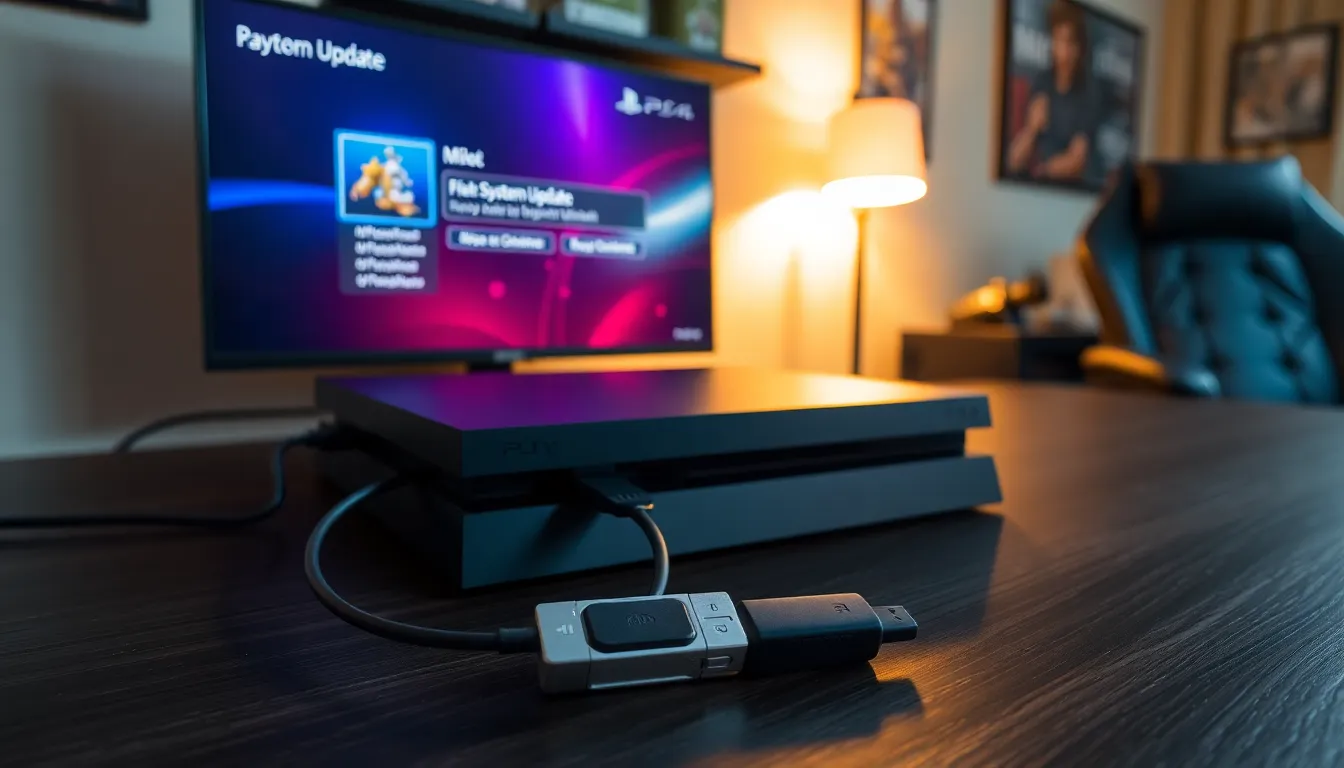Table of Contents
ToggleThe PS4 gaming console, renowned for its impressive library and immersive gameplay, frequently requires updates to enhance performance and security. While many players opt for direct updates over the internet, using a USB drive to perform these updates offers a range of advantages that can streamline the process. In this text, we will investigate into the PS4 update process, highlight the benefits of using USB for updates, and provide a detailed step-by-step guide to executing updates via USB. Also, we will address common issues that may arise during the process and outline best practices for managing your PS4 updates effectively.
Overview of the PS4 Update Process

Updating a PS4 is crucial for maintaining optimal performance. Typically, updates can be performed directly from the console, where it connects to the internet and downloads the necessary files automatically. But, there are scenarios where an internet connection might be unreliable or non-existent. In such instances, updating via a USB drive becomes not only a practical alternative but also a convenient solution.
A standard PS4 update consists of system software enhancements, security patches, and often, new features aimed at improving user experience. Updates are usually released periodically by Sony and can vary in size, impacting the time it takes to download and install them. Players should ensure their console is set to automatically check for updates, but they can also opt to perform manual updates via USB for a more controlled approach.
Benefits of Using USB for Updates
Using a USB drive for PS4 updates presents several notable benefits:
- Reduced Internet Dependency: For those living in areas with slow or spotty internet connections, utilizing a USB drive can save time and frustration. Users can download the update on a more stable connection, then transfer it to their console.
- Faster Update Process: USB transfers can often be quicker than downloading files directly to the console. This can be particularly advantageous during large updates, where waiting times can be significantly reduced.
- Backup Convenience: By maintaining a collection of updates on a USB drive, users can easily store versions of software they might want to revert back to.
- Troubleshooting Tool: If a PS4 is experiencing difficulties, such as failure to start or connect to the internet, having a USB update handy allows users to resolve issues swiftly.
Step-By-Step Guide to Update PS4 via USB
Updating a PS4 via USB can seem daunting, but following these steps can simplify the process:
Step 1: Prepare the USB Drive
- Insert the USB drive into your computer.
- Ensure the USB is formatted to either FAT32 or exFAT format.
- On Windows: Right-click on the drive in File Explorer, select “Format,” choose the format, and click “Start.”
- On Mac: Use the “Disk Utility” to format.
Step 2: Create the Required Folders
- Open the USB drive and create a folder named “PS4” in the root directory (it must be in all capital letters).
- Inside the “PS4” folder, create another folder named “UPDATE” (also in capital letters).
Step 3: Download the Update File
- Visit the official PlayStation website and navigate to the PS4 system software update page.
- Download the latest update file, ensuring it is named “PS4UPDATE.PUP.”
- Move this file into the “UPDATE” folder on your USB drive.
Step 4: Update the PS4
- Safely eject the USB drive from your computer and insert it into your PS4.
- Power on the PS4 in Safe Mode: Turn off the console completely, then hold the power button until you hear two beeps (about seven seconds).
- Connect the controller via USB and press the PS button. Select “Initialize PS4 (Reinstall System Software)” or “Update System Software” from the Safe Mode menu, then follow on-screen instructions.
Troubleshooting Common Issues
Even with a carefully executed update process, users might encounter issues. Here are some common problems and solutions:
- Error Messages During Update:
- Ensure the USB is properly formatted and that the update file is saved correctly in the “UPDATE” folder.
- PS4 Not Recognizing USB Drive:
- Check the connection or try a different USB port. Using a USB 3.0 drive is often recommended.
- Update Fails to Install:
- Reboot the PS4 in Safe Mode and attempt the process again. Sometimes, simply re-downloading the update file resolves this issue.
- Stuck on Boot Screen:
- If the console gets stuck, the “Initialize PS4” option in Safe Mode can often rectify this, but it may delete saved data.
Best Practices for Managing Updates
To manage PS4 updates more effectively, keep these best practices in mind:
- Regular Check-ins:
- Make it a habit to check for updates regularly, especially if you notice performance issues or new game releases.
- Maintain USB Backups:
- Keep a USB drive updated with the latest firmware to avoid issues when you need to reinstall.
- Set Automatic Updates:
- Enable the automatic update feature in the settings to ensure the PS4 is always up to date.
- Free Up Space:
- Regularly check and remove unused applications or game files to ensure there’s enough space for updates and avoid installation errors.
Conclusion
Updating a PS4 via USB provides a practical alternative that not only saves time but also allows users better control over their console’s performance. With a simple understanding of the update process, the benefits of using USB, and a clear step-by-step guide, gamers can ensure they keep their systems running smoothly. By following best practices and knowing how to troubleshoot common issues, players can focus more on enjoying their games rather than dealing with system hiccups.







